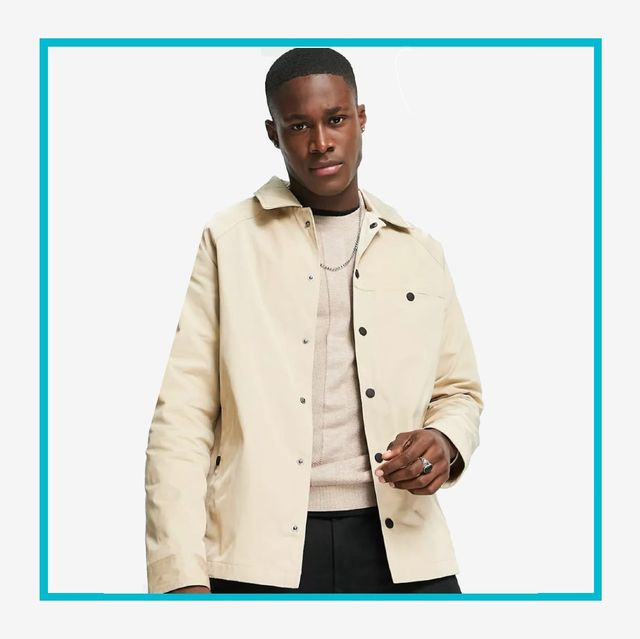The Significance of Lasting Apparel: Exactly How It Impacts the Atmosphere and Your Storage room
Sustainable garments is increasingly identified for its essential function in reducing the environmental influence of the fast garment industry. By concentrating on environment-friendly products and ethical manufacturing methods, it attends to pushing environmental issues. This shift not only benefits the earth but additionally affects customer choices, bring about a more thoughtful technique to closet monitoring. Understanding these dynamics increases essential questions regarding fashion's future and personal obligation in shaping it.
The Environmental Footprint of Fast Style

Benefits of Sustainable Materials
Lasting materials offer significant advantages, particularly via environment-friendly textile options that decrease ecological damage. These products likewise demonstrate toughness and longevity, reducing the requirement for constant replacements. Because of this, they add to a more lasting apparel industry and promote liable customer actions.
Eco-Friendly Fabric Selections
While the garment industry has actually long been related to rapid patterns and ecological damage, the rise of green textile options presents a transformative opportunity. Lasting products such as natural cotton, hemp, and Tencel have actually obtained appeal as a result of their reduced eco-friendly influence. These textiles are commonly created without harmful pesticides and call for much less water, reducing their carbon impact - Branded Clothing. Additionally, many environment-friendly materials are naturally degradable, adding to a round economic climate by lessening waste. Choosing sustainable products not only supports eco accountable methods yet also advertises healthier ecosystems. As customers end up being much more familiar with their purchasing power, the need for eco-friendly materials encourages brand names to innovate and embrace more sustainable production techniques, inevitably profiting the world and future generations
Toughness and Longevity Advantages
Several customers are progressively recognizing the durability and long life advantages of sustainable materials in their clothing options. Unlike standard materials, lasting products such as organic cotton, hemp, and recycled polyester are crafted to hold up against wear and tear, causing garments that last much longer. This lowered regularity of substitute not just conserves customers cash over time however additionally decreases waste produced by fast fashion. On top of that, sustainable clothes frequently uses environment-friendly manufacturing techniques that improve textile stamina, adding to a decrease in the general carbon footprint. By purchasing durable garments, customers can grow a much more sustainable closet while taking pleasure in top quality items that maintain their visual and capability in time. Sturdiness and long life stand as crucial benefits of selecting lasting products.
Decreasing Waste Through Lasting Practices
Reducing waste in the apparel industry can be accomplished through innovative methods such as upcycling and repurposing products. Additionally, embracing minimalist closet approaches motivates consumers to prioritize high quality over amount, eventually lowering clothes usage. With each other, these techniques add greatly to a more lasting clothing version.
Upcycling and Repurposing Materials
Upcycling and repurposing products have emerged as innovative approaches in the garment industry, changing disposed of textiles right into beneficial new products. This technique not just lessens waste however additionally motivates creative thinking and individuality in garments design. By taking old garments and products, designers can produce distinct pieces that reflect individual style while minimizing the demand for new sources. In addition, upcycling frequently needs much less energy and water compared to standard manufacturing procedures, considerably decreasing the ecological footprint of style. As customers become extra knowledgeable about sustainability, the appeal of upcycled clothing proceeds to increase, promoting a circular economy. Eventually, these techniques add to a more lasting future, where fashion prioritizes ecological wellness over rapid production and intake.

Minimalist Wardrobe Approaches
As individuals progressively seek to minimize their environmental impact, embracing minimalist closet techniques has actually obtained traction as an effective approach to sustainable style. These methods stress top quality over amount, encouraging customers to curate a smaller sized collection of flexible, durable garments. By concentrating on classic pieces that can be combined and matched, individuals can reduce the regularity of acquisitions and inevitably lower waste.Additionally, minimalism advertises mindful usage, prompting buyers to reflect on the environmental and honest ramifications of their choices. This approach not just fosters a more lasting way of life however also simplifies everyday decision-making pertaining to clothing. As people embrace minimal concepts, they contribute to a fashion society that values sustainability and responsible consumerism, ultimately leading to a more eco-conscious society.
The Function of Moral Labor in Lasting Fashion
While lots of consumers are increasingly knowledgeable about the ecological effects of their apparel options, the relevance of moral labor techniques in sustainable fashion can not be forgotten. Honest labor includes reasonable wages, risk-free working problems, and regard for employees' civil liberties, creating the foundation of responsible style manufacturing. Brand names that prioritize honest labor not only boost communities however additionally established a standard for responsibility in the industry.Moreover, the assimilation of ethical techniques fosters openness, making it possible for customers to make informed options regarding their purchases. This technique contrasts dramatically with fast fashion's exploitative labor designs, which often focus on revenue over individuals. By supporting companies committed to ethical labor, consumers add to a system that values human self-respect alongside environmental sustainability. Consequently, honest labor is not simply an add-on; it is vital to the wider goal of sustainable fashion, making certain that the quest for eco-friendliness does not come at the cost of civils rights.
The Impact of Lasting Clothing on Carbon Emissions
Lasting clothes has the prospective to significantly reduce carbon exhausts connected with the fashion market. Traditional garment manufacturing contributes especially to greenhouse gas discharges, mostly due to energy-intensive production procedures and the usage of non-renewable resources. In comparison, sustainable fashion concentrates on environment-friendly materials, such as organic cotton this page or recycled fibers, which often need less energy to produce.Moreover, lasting brands tend to embrace much more effective manufacturing practices, lessening waste and decreasing total emissions. By focusing on toughness and ageless design, sustainable garments urges consumers to purchase much less often, further lowering the carbon footprint related to overconsumption.Additionally, numerous lasting brands are committed to openness in their supply chains, making it possible for consumers to make informed options that line up with their values. Inevitably, moving in the direction of lasting apparel can lead to a considerable decrease in carbon discharges, adding to a much healthier planet and a more lasting future for the fashion business.
Sustaining Local Economies With Sustainable Selections
The shift towards sustainable clothes not only addresses ecological problems yet additionally significantly benefits local economic climates. By selecting sustainable fashion, customers commonly sustain regional craftsmens and local business, boosting neighborhood strength. These ventures commonly operate a smaller scale, focusing on craftsmanship and moral techniques over mass production.Investing in locally made sustainable clothing fosters job creation and boosts financial development within communities. As customers come to be extra mindful of the environmental effect of their acquisitions, they significantly look for additional resources items that show their values. This demand encourages neighborhood makers to take on lasting practices, adding to a circular economy.Moreover, supporting neighborhood businesses decreases transport emissions, straightening with eco-conscious customer habits. The interconnectedness of sustainable garments and regional economic situations emphasizes the necessary function that individual selections play in advertising both economic and ecological wellness. By fostering these local links, neighborhoods can flourish while also functioning towards an extra sustainable future.
Transforming Your Storage Room: Tips for a Sustainable Closet
As people seek to lower their environmental impact, changing a closet right into a sustainable closet ends up being a necessary step. One reliable method is to evaluate existing garments, maintaining just items that are used frequently which line up with sustainability objectives. Focusing on quality over quantity is vital; buying durable pieces from environmentally friendly brand names can significantly decrease waste.Additionally, including second-hand products can take a breath new life right into a closet while reducing ecological damages. Organizing apparel swaps with good friends or donating unused products can better promote sustainability.When buying, people need to look for products that are natural, recycled, or biodegradable, and prevent quick style stores - Branded Clothing. Finally, practicing mindful usage by thoughtfully thinking about each acquisition can add to an extra sustainable lifestyle. By applying these tips, one can create a wardrobe that reflects personal style while supporting environmental stewardship
Frequently Asked Questions
How Can I Identify Sustainable Clothes Brands?
To determine lasting garments brand names, one must investigate materials utilized, look for accreditations like Fair Trade, and analyze the brand name's transparency about their manufacturing processes, labor techniques, and environmental influence, making sure green and moral methods are focused on.
What Are the Prices Related To Lasting Fashion?
The costs related to sustainable fashion can differ considerably. Higher manufacturing expenditures, honest sourcing, and environmentally friendly products usually bring about boosted market prices, which may hinder some consumers while interesting ecologically conscious buyers.
Can Sustainable Apparel Be Elegant and Trendy?
Lasting clothes can certainly be fashionable and stylish. Designers increasingly focus on innovative products and ethical manufacturing methods, proving that style and sustainability can coexist. Consumers currently have diverse options that mix aesthetics with ecological consciousness.
Exactly How Does Laundering Clothes Affect Their Sustainability?
Washing see here garments greatly effects sustainability by consuming water and power, adding to pollution, and causing microplastic launch. Constant washing can deteriorate materials, reducing their life-span and increasing the requirement for substitutes, ultimately worsening ecological problems.
What Is the Lifespan of Sustainable Clothes Contrasted to Rapid Style?
The lifespan of sustainable clothing normally exceeds that of fast fashion items, typically long-term several years due to high quality products and craftsmanship. On the other hand, quick fashion garments may deteriorate rapidly, requiring more regular substitutes. Lasting apparel is significantly identified for its critical role in lessening the ecological influence of the rapid style market. While lots of customers are progressively conscious of the environmental effects of their apparel options, the relevance of honest labor practices in sustainable style can not be ignored. Branded Clothing. Sustainable clothing has the potential to substantially lower carbon discharges connected with the style market. In contrast, sustainable style concentrates on green materials, such as organic cotton or recycled fibers, which usually need much less power to produce.Moreover, sustainable brands have a tendency to take on a lot more effective manufacturing techniques, decreasing waste and decreasing overall exhausts. By focusing on resilience and ageless style, sustainable garments encourages customers to get less frequently, more minimizing the carbon footprint linked with overconsumption.Additionally, lots of lasting brand names are devoted to transparency in their supply chains, enabling consumers to make educated choices that align with their worths